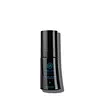What's inside
What's inside
 Key Ingredients
Key Ingredients

 Benefits
Benefits

 Concerns
Concerns

 Ingredients Side-by-side
Ingredients Side-by-side

Water
Skin ConditioningArgania Spinosa Kernel Oil
EmollientPolyglyceryl-6 Distearate
EmulsifyingJojoba Esters
EmollientPolyglyceryl-3 Beeswax
EmulsifyingCetyl Alcohol
EmollientVigna Aconitifolia Seed Extract
Skin ConditioningGlycerin
HumectantPropanediol
SolventOpuntia Ficus-Indica Seed Oil
EmollientNigella Sativa Seed Oil
EmollientCaprylhydroxamic Acid
1,2-Hexanediol
Skin ConditioningHydroxyacetophenone
AntioxidantCellulose
AbsorbentXanthan Gum
EmulsifyingLevan
Skin ProtectingDecyl Glucoside
CleansingOlea Europaea Leaf Extract
PerfumingPhenethyl Alcohol
MaskingZiziphus Jujuba Seed Extract
Skin ConditioningAscorbic Acid
AntioxidantCitric Acid
BufferingCitrus Aurantium Amara Peel Oil
Skin ConditioningCitral
PerfumingFarnesol
PerfumingGeraniol
PerfumingLimonene
PerfumingLinalool
PerfumingWater, Argania Spinosa Kernel Oil, Polyglyceryl-6 Distearate, Jojoba Esters, Polyglyceryl-3 Beeswax, Cetyl Alcohol, Vigna Aconitifolia Seed Extract, Glycerin, Propanediol, Opuntia Ficus-Indica Seed Oil, Nigella Sativa Seed Oil, Caprylhydroxamic Acid, 1,2-Hexanediol, Hydroxyacetophenone, Cellulose, Xanthan Gum, Levan, Decyl Glucoside, Olea Europaea Leaf Extract, Phenethyl Alcohol, Ziziphus Jujuba Seed Extract, Ascorbic Acid, Citric Acid, Citrus Aurantium Amara Peel Oil, Citral, Farnesol, Geraniol, Limonene, Linalool
Water
Skin ConditioningSodium Hyaluronate
HumectantCaprylic/Capric Triglyceride
MaskingGlycerin
HumectantAcetyl Octapeptide-3
HumectantGlyceryl Dilaurate
EmollientPseudoalteromonas Ferment Extract
HumectantGlycosaminoglycans
EmollientHydrolyzed Wheat Protein
Skin ConditioningHydrolyzed Soy Protein
HumectantTripeptide-10
Skin ConditioningCitrulline
Skin ConditioningTripeptide-1
Skin ConditioningLecithin
EmollientSilica Dimethyl Silylate
EmollientDimethicone
EmollientCetyl Alcohol
EmollientCetearyl Alcohol
EmollientCeteareth-20
CleansingGlyceryl Stearate
EmollientPEG-100 Stearate
Urea
BufferingGlucose
HumectantGuanidine Hcl
BufferingDipalmitoyl Hydroxyproline
Skin ConditioningPanthenol
Skin ConditioningPhospholipids
Skin ConditioningDipotassium Glycyrrhizate
HumectantButylene Glycol
HumectantXanthan Gum
EmulsifyingCarbomer
Emulsion StabilisingTriethanolamine
BufferingPvp
Emulsion StabilisingAsiaticoside
AntioxidantAsiatic Acid
Skin ConditioningMadecassic Acid
Skin ConditioningRetinyl Palmitate
Skin ConditioningTocopheryl Acetate
AntioxidantEthylhexyl Palmitate
EmollientDisodium EDTA
1,2-Hexanediol
Skin ConditioningCaprylyl Glycol
EmollientAscorbyl Palmitate
AntioxidantPantothenic Acid
Skin ConditioningWater, Sodium Hyaluronate, Caprylic/Capric Triglyceride, Glycerin, Acetyl Octapeptide-3, Glyceryl Dilaurate, Pseudoalteromonas Ferment Extract, Glycosaminoglycans, Hydrolyzed Wheat Protein, Hydrolyzed Soy Protein, Tripeptide-10, Citrulline, Tripeptide-1, Lecithin, Silica Dimethyl Silylate, Dimethicone, Cetyl Alcohol, Cetearyl Alcohol, Ceteareth-20, Glyceryl Stearate, PEG-100 Stearate, Urea, Glucose, Guanidine Hcl, Dipalmitoyl Hydroxyproline, Panthenol, Phospholipids, Dipotassium Glycyrrhizate, Butylene Glycol, Xanthan Gum, Carbomer, Triethanolamine, Pvp, Asiaticoside, Asiatic Acid, Madecassic Acid, Retinyl Palmitate, Tocopheryl Acetate, Ethylhexyl Palmitate, Disodium EDTA, 1,2-Hexanediol, Caprylyl Glycol, Ascorbyl Palmitate, Pantothenic Acid
Ingredients Explained
These ingredients are found in both products.
Ingredients higher up in an ingredient list are typically present in a larger amount.
1,2-Hexanediol is a synthetic liquid and another multi-functional powerhouse.
It is a:
- Humectant, drawing moisture into the skin
- Emollient, helping to soften skin
- Solvent, dispersing and stabilizing formulas
- Preservative booster, enhancing the antimicrobial activity of other preservatives
Cetyl Alcohol is a fatty alcohol. Fatty Alcohols are most often used as an emollient or to thicken a product.
Its main roles are:
Though it has "alcohol" in the name, it is not related to denatured alcohol or ethyl alcohol.
The FDA allows products labeled "alcohol-free" to have fatty alcohols.
Learn more about Cetyl AlcoholGlycerin is already naturally found in your skin. It helps moisturize and protect your skin.
A study from 2016 found glycerin to be more effective as a humectant than AHAs and hyaluronic acid.
As a humectant, it helps the skin stay hydrated by pulling moisture to your skin. The low molecular weight of glycerin allows it to pull moisture into the deeper layers of your skin.
Hydrated skin improves your skin barrier; Your skin barrier helps protect against irritants and bacteria.
Glycerin has also been found to have antimicrobial and antiviral properties. Due to these properties, glycerin is often used in wound and burn treatments.
In cosmetics, glycerin is usually derived from plants such as soybean or palm. However, it can also be sourced from animals, such as tallow or animal fat.
This ingredient is organic, colorless, odorless, and non-toxic.
Glycerin is the name for this ingredient in American English. British English uses Glycerol/Glycerine.
Learn more about GlycerinWater. It's the most common cosmetic ingredient of all. You'll usually see it at the top of ingredient lists, meaning that it makes up the largest part of the product.
So why is it so popular? Water most often acts as a solvent - this means that it helps dissolve other ingredients into the formulation.
You'll also recognize water as that liquid we all need to stay alive. If you see this, drink a glass of water. Stay hydrated!
Learn more about WaterXanthan gum is used as a stabilizer and thickener within cosmetic products. It helps give products a sticky, thick feeling - preventing them from being too runny.
On the technical side of things, xanthan gum is a polysaccharide - a combination consisting of multiple sugar molecules bonded together.
Xanthan gum is a pretty common and great ingredient. It is a natural, non-toxic, non-irritating ingredient that is also commonly used in food products.
Learn more about Xanthan Gum